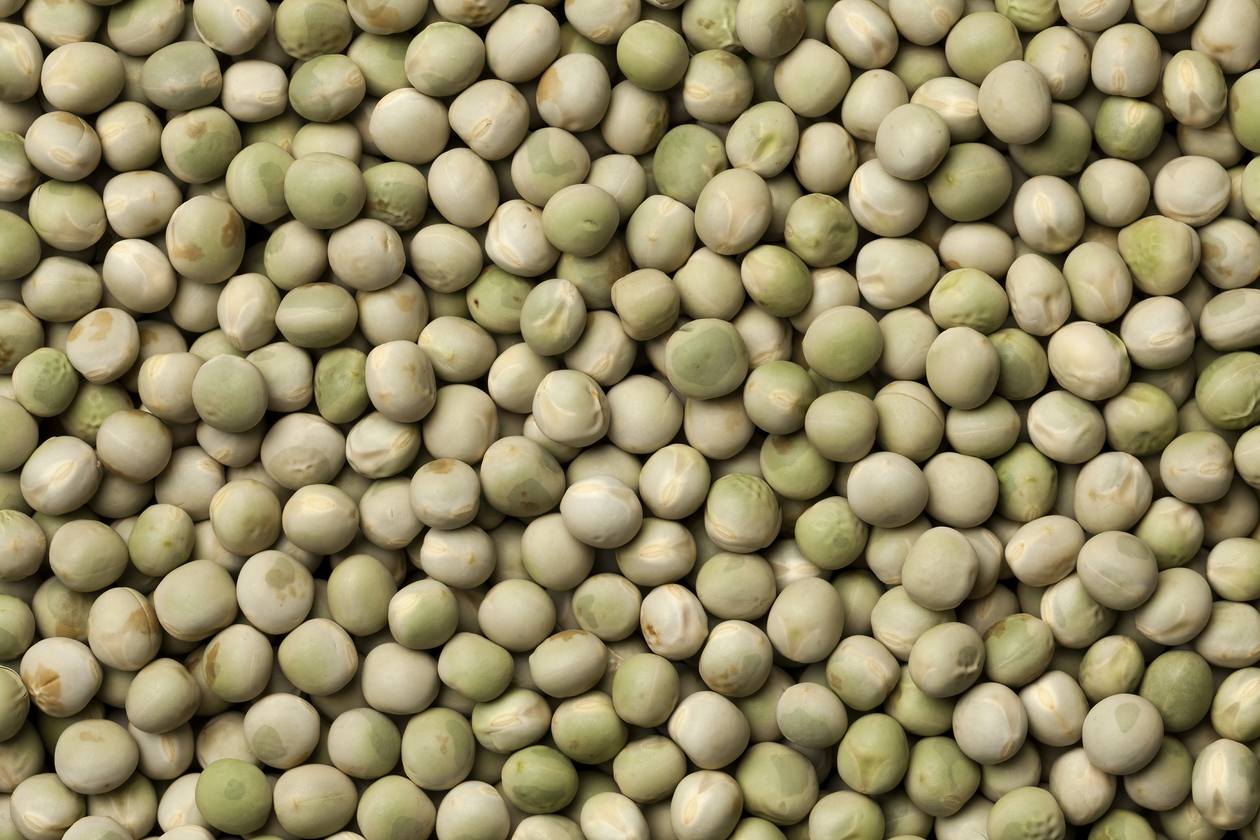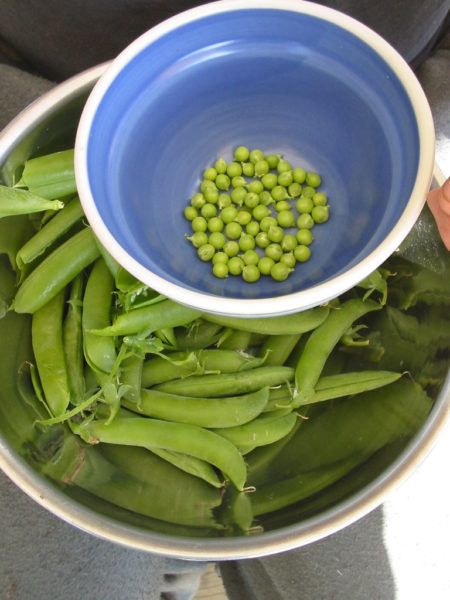To save pea seeds for planting next year, wait for the pods to fully mature on the vine, then carefully remove and dry the seeds before storing them in a cool, dry place. As gardening enthusiasts, it’s exciting to harvest and enjoy the fruits of our labor.
And while enjoying fresh peas is delightful, saving their seeds for future planting can be equally rewarding. By following a simple process, you can ensure a steady supply of homegrown peas year after year. We’ll explore an easy method to save pea seeds for planting next season.
So, let’s dive in and learn how to preserve and store pea seeds to ensure a bountiful harvest in the future.

Credit: www.allotment-garden.org
Why Save Pea Seeds?
Ensuring Genetic Diversity: Saving pea seeds allows you to preserve the genetic diversity of the plant. By selecting and saving seeds from the healthiest and most productive plants, you can improve the overall quality of the crop and adapt it to your specific growing conditions.
Cost-Effective: Saving pea seeds is a cost-effective way to grow your garden in the following year. Instead of purchasing new seeds, you can rely on the ones you saved, which not only saves money but also ensures a sustainable practice.
Personal Seed Bank: Building a personal seed bank offers you a sense of self-sufficiency and independence. By continually saving seeds from your own plants, you become less reliant on commercial seed sources and have control over the availability and quality of your seeds.
Identifying The Right Pea Plants
To save pea seeds for planting next year, it’s crucial to start by identifying the right pea plants. Begin by selecting healthy and robust plants, as they are more likely to produce high-quality seeds. Look for traits such as strong stems, vibrant foliage, and disease-free plants. Additionally, it’s essential to choose open-pollinated varieties. These types of pea plants naturally cross-pollinate, allowing for genetic diversity within the seed production.
Open-pollinated varieties are more likely to produce seeds that will grow into plants with similar characteristics as the parent plant. This consistency is especially beneficial if you want to maintain specific traits year after year. By following these steps when selecting the peas for seed saving, you can ensure a successful harvest and preserve the desired traits of your favorite pea plants for future gardening seasons.
How to Save Pea Seeds for Planting Next Year: Step by Step Guide
Harvesting Pea Pods
Harvesting pea pods and saving the seeds for next year requires careful timing. To ensure optimum seed maturity, keep a close eye on the plants. Look for pods that have turned brown and dried out on the vine. These mature pods indicate that the peas inside have reached their full potential. Do not wait too long, as overripe pods may begin to crack and scatter the seeds.
Regular monitoring of seed maturity is essential to know when the right time to harvest is. Check the pods daily and gently squeeze them to feel the firmness of the peas inside. If they feel hard and round, the seeds are likely mature. Turn regular monitoring into a habit to avoid missing the ideal harvesting time.
When selecting pods for saving seeds, look for those that are fully developed and have remained intact on the vine until the end of the growing season. Avoid pods that show signs of damage or disease, as they may harbor unhealthy or weak seeds. Picking healthy, undamaged pods will increase the chances of successful germination in the following year.
Extracting And Cleaning Pea Seeds
Threshing the Pods: After harvesting your mature pea plants, start by removing the peas from their pods. Gently crush the pods to release the seeds.
Removing Debris and Chaff: To separate the seeds from any remaining debris and chaff, you can use a sieve or a fine-mesh screen. Holding the sieve over a container, gently shake to allow the smaller particles to fall through while retaining the pea seeds.
Drying the Seeds Properly: Spread the cleaned seeds in a single layer on a clean, dry surface, such as a baking sheet or paper towel. Place the tray in a cool and well-ventilated area, away from direct sunlight. Allow the seeds to dry completely for 1-2 weeks, or until they are hard and brittle to the touch.
Storing Pea Seeds For Longevity
Properly storing your pea seeds is essential if you want to use them for planting in the following year. Choosing the right storage containers is the first step in ensuring the longevity of your seeds. Opt for airtight containers made of glass or metal to keep out moisture and pests. Additionally, make sure the containers are clean and dry before transferring the seeds.
Maintaining the optimal conditions is crucial for the successful preservation of your pea seeds. Store them in a cool, dry place with a temperature between 32 and 41 degrees Fahrenheit. Keep the humidity level below 50 percent to prevent the seeds from becoming moldy or rotting.
Labeling and organizing the seeds will make it easier to find and use them in the future. Clearly mark the containers with the seed variety and the date they were saved. This information will help you keep track of their age and viability. Additionally, consider using a storage system that allows for easy organization, such as using plastic bags or small dividers within a larger container.
Planning For Next Year’s Planting
Saving pea seeds for planting next year can be both sustainable and cost-effective. However, it’s essential to plan ahead to ensure success. One important step is to test the viability of the seeds. This can be done by conducting a simple germination test. Begin by placing a set number of seeds between moist paper towels and monitoring them for a specific period of time. This will determine the percentage of viable seeds.
Calculating Seed Quantity
Once the seed viability is established, it’s crucial to calculate the quantity of seeds required for the following year’s planting. This can be determined by considering factors such as the desired planting area, plant spacing, and expected germination rate. By accurately calculating the required seed quantity, wastage can be minimized, and resources can be better utilized.
Developing a Planting Schedule
Developing a planting schedule based on the specific needs of pea plants is crucial. Consider the climate, frost dates, and the optimal time for planting peas in your region. Additionally, it’s important to factor in any previous crop rotation and consider interplanting with compatible vegetables. This will help ensure an organized and efficient planting process.
Troubleshooting Common Seed Saving Issues
Seed saving is a cost-effective way to ensure a bountiful harvest year after year. However, it can come with its fair share of challenges. One common issue that many gardeners face is cross-pollination, which can lead to undesirable traits in saved pea seeds. To prevent cross-pollination, it is essential to separate different types of peas by at least 50 feet or use physical barriers, such as row covers or cages.
Another important consideration is addressing pea seed diseases. Inspecting plants regularly and promptly removing any infected plants is crucial in preventing the spread of diseases to saved seeds. It is also vital to avoid seed contamination. This can be done by practicing good hygiene, cleaning tools after use, and storing seeds in airtight containers in a cool, dry place. By following these steps, you can successfully save pea seeds for planting next year.
Saving Pea Seeds: Tips And Tricks
Saving pea seeds for planting next year is a cost-effective way to grow your own peas and ensures a bountiful harvest. There are several methods you can use to save pea seeds, including fermentation, using silica gel packs, and creating DIY seed packets.
Fermentation Method
One popular method for saving pea seeds involves fermentation. First, collect mature pea pods from non-hybrid, open-pollinated plants. Remove the peas from the pods and place them in a jar with a small amount of water. Let the mixture sit for a few days, stirring it occasionally. During this time, beneficial bacteria will ferment the pulp, separating the viable seeds from the nonviable ones. After fermentation, rinse the seeds and dry them thoroughly before storing in a cool, dry place.
Using Silica Gel Packs
An alternative method is to use silica gel packs to absorb moisture from the seeds. After collecting the mature pea pods, remove the peas and place them in a glass jar. Add a few silica gel packs to the jar and seal it tightly. The silica gel packs will help to keep the seeds dry and prevent them from molding. Store the jar in a cool, dark place until you are ready to plant the seeds next year.
Diy Seed Packets
If you prefer a more organized approach, you can create your own seed packets for storing pea seeds. Use small envelopes or paper bags and label them with the variety and date of collection. Place the dry seeds in the packets and seal them tightly. Store the packets in a cool, dry place until you are ready to plant the peas in the next growing season.
Frequently Asked Questions For How To Save Pea Seeds For Planting Next Year
Do Peas Seeds Need To Be Dried Before Planting?
Pea seeds do not need to be dried before planting. They can be sown directly into the soil for optimal germination and growth.
How Do You Preserve Seeds To Plant Next Year?
Preserve seeds by storing them in a cool, dry place away from sunlight and moisture. Place seeds in airtight containers or envelopes to keep them safe. Label the containers with the seed type and the date of collection. Store the containers in a refrigerator or freezer for long-term preservation.
How Do You Dry And Save Peas?
To dry and save peas, start by harvesting them when they are fully matured. Shell the peas from the pods and blanch them in boiling water for 1-2 minutes. Drain the peas and spread them in a single layer on a baking sheet.
Allow them to air dry for several hours until they are completely dry. Store the dried peas in an airtight container in a cool, dry place to maintain their quality and freshness.
How To Save Pea Seeds For Planting Next Year?
To save pea seeds for planting next year, start by allowing the pods to fully mature on the vine. Once the pods are dry and brittle, remove them from the plant and shell the peas. Store the seeds in a cool, dry place in a labeled envelope or container until you’re ready to plant them again in the following year.
Conclusion
To successfully save pea seeds for planting next year, it is crucial to follow the proper techniques. By allowing the pods to fully mature on the plant before harvesting, you can ensure viable seeds for future use. Proper drying and storage conditions, such as in a cool and dry environment, will further enhance seed longevity.
With these simple steps, you can effortlessly grow your own pea plants year after year, fostering sustainability and self-sufficiency in your garden.

